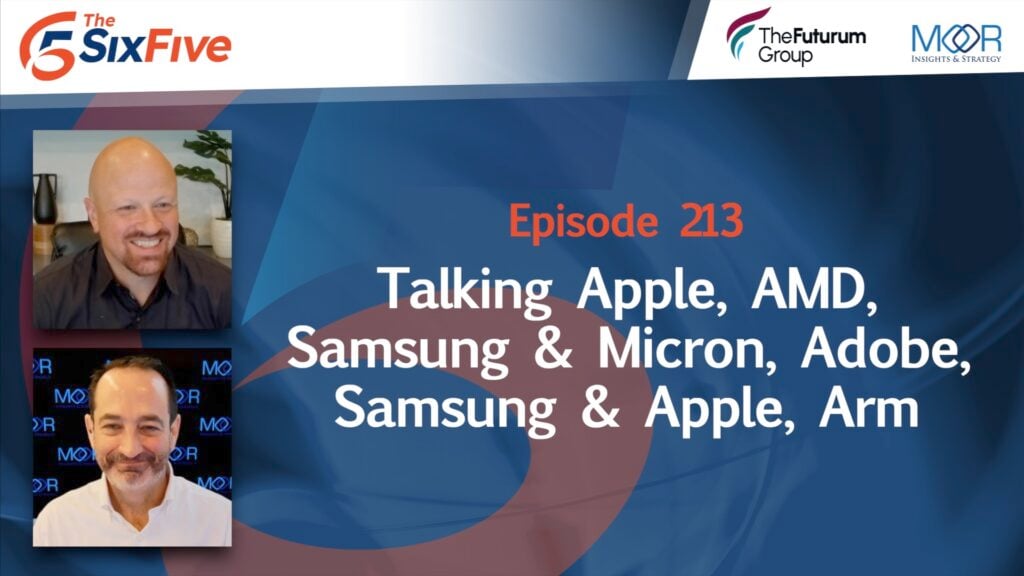The News: Qualcomm and Vodafone announced their plans to develop, test, and integrate next generation 5G distributed units (DUs) and Radio Unit (RU) with Massive MIMO capabilities, ultimately to deliver the commercial deployment of Open RAN in Europe. The joint announcement builds on the companies’ previous commitment in April 2021 to develop technical blueprints that can aid equipment suppliers building 5G networks of the future using Open RAN technology. Read the Qualcomm Press Release here.
Qualcomm and Vodafone Provide New Level Set for 5G Open RAN Prospects
Analyst Take: Qualcomm and Vodafone are developing 5G Open RAN Infrastructure solutions powered by the Qualcomm X100 5G RAN Accelerator Card and the Qualcomm QRU100 5G RAN Platform. The solutions are designed to improve power consumption performance to reduce total cost of ownership (TCO) and make networks more environmentally sustainable. The solutions also address the demands of next-generation networks with massive MIMO using 64T64R and 32T32R capabilities needed for high-capacity dense urban scenarios.
I see Qualcomm making further inroads across the Open RAN ecosystem through its collaboration with Vodafone, a high-profile communications service provider and proponent of Open RAN. For example, Vodafone plans to use Open RAN technology in 30 percent of its masts across Europe by 2030. I see Vodafone’s commitment to advancing Open RAN as motivated by the desire to minimize reliance on proprietary RAN systems, as well as supporting and monetizing rigorous 5G application requirements.
From my perspective, Qualcomm’s established robust market position in the small cells market bolsters making inroads into the Open RAN segment through the X100 5G RAN Accelerator Card and QRU 5G RAN platform offerings. Already Qualcomm counts Fujitsu, Mavenir, NEC, Rakuten Symphony, and Viettel as Open RAN customers.
Vodafone and Qualcomm are also developing the technical blueprint for more equipment suppliers to help build emerging 5G networks using Open RAN technology by lowering the entry barrier for many companies and drive diversification of network equipment vendors. In particular, the reference designs will be designed to support emerging and established network infrastructure vendors’ ability to develop high-performance, virtualized, interoperable, and modular 5G networks at scale. Overall, this aims to make cellular infrastructure more innovative and competitive.
The Qualcomm-Vodafone collaboration can fortify Open RAN’s ecosystem foundation by delivering the reference design that combines Qualcomm’s acumen in delivering low-power and top-level performance Application-Specific Integrated Circuit (ASIC) technology for infrastructure and device solutions with Vodafone’s engineering expertise in deploying mass-scale, large footprint networks.
The alliance seeks to prepare Open RAN for 5G prime time readiness in supporting bandwidth-intensive applications such as augmented reality (AR) and virtual reality (VR) devices, as well as expanding developed support for 5G applications. I see the blueprints aligning with the increased demand for enhanced consumer video (e.g., 4K/8K video streaming, immersive entertainment, smart stadiums, video ring-back tone), enterprise/business video surveillance, and cloud gaming.
Key Takeaways: Qualcomm and Vodafone Target Spurring Open RAN Commercial Deployment in Europe
Both Qualcomm and Vodafone plan to unveil their collaborative 5G vDU and massive MIMO RU solutions during Mobile World Congress Barcelona 2023 (February 27-March 2, 2023). I believe the unveiling is an important stepping stone toward making Open RAN commercially viable by the end of 2023. Such a development I believe will make both the announcement and partnership a bona fide success.
Disclosure: Futurum Research is a research and advisory firm that engages or has engaged in research, analysis, and advisory services with many technology companies, including those mentioned in this article. The author does not hold any equity positions with any company mentioned in this article.
Analysis and opinions expressed herein are specific to the analyst individually and data and other information that might have been provided for validation, not those of Futurum Research as a whole.
Other insights from Futurum Research:
Juniper Expands Cloud Metro Portfolio to Power Sustainable Business Growth
Juniper Ups SASE Proposition and Stirs Competition with CASB and DLP Additions
Juniper Reveals Data Center Intentions with Apstra Acquisition
Image Credit: Google
Author Information
Ron is an experienced, customer-focused research expert and analyst, with over 20 years of experience in the digital and IT transformation markets, working with businesses to drive consistent revenue and sales growth.
He is a recognized authority at tracking the evolution of and identifying the key disruptive trends within the service enablement ecosystem, including a wide range of topics across software and services, infrastructure, 5G communications, Internet of Things (IoT), Artificial Intelligence (AI), analytics, security, cloud computing, revenue management, and regulatory issues.
Prior to his work with The Futurum Group, Ron worked with GlobalData Technology creating syndicated and custom research across a wide variety of technical fields. His work with Current Analysis focused on the broadband and service provider infrastructure markets.
Ron holds a Master of Arts in Public Policy from University of Nevada — Las Vegas and a Bachelor of Arts in political science/government from William and Mary.







